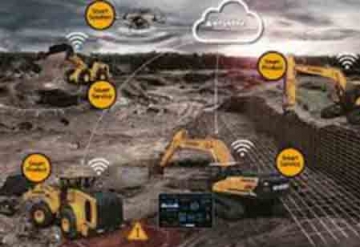THANK YOU FOR SUBSCRIBING

 Amias Gerety, Partner, QED Investors
Amias Gerety, Partner, QED InvestorsConstruction lending is a high-risk business. It is defined by lending large sums where the collateral for the loan is yet to be built. To play with the line from the Kevin Costner classic Field of Dreams—it’s not “if you build it they will come” but “if we build it, you’ll be secured.”
All around us, the risks for this type of lending have never been more evident. Though construction is considered an “essential activity” in most states, even during COVID-induced shutdowns, construction lending actually increased in Q2 of this year. Nobody knows what the future of cities will look like after this pandemic, and nobody knows when or how the wave of real estate-related bankruptcies will ripple through the market.
Moreover, construction—even construction lending at the largest banks in the world – is an analogue business. Risk management practices for lenders, developers and equity partners all rely on human beings to review hundreds or thousands of pages of PDF images or printed pages, compare those pages to budgets and plans and hope that they didn’t miss something significant. Though there are processes to control and review these plans, these controls have very little data and almost no analysis to support them. Instead, they are underpinned by trust – trust in business partners and trust in employees who “stare and compare” and try to understand what’s happening in a construction project.
This will change. Better risk management, better monitoring, and most importantly, better business decisions are possible if we modernize the data infrastructure for construction lending.
In the world of data science, big opportunities are usually defined by simple criteria: most importantly, there have to be business decisions that are frequently and materially incorrect; and then there has to be a relevant data set that can be analyzed to improve those business decisions.
In the financial crisis, loss rates on construction lending peaked at 8 percent, so we definitely have a rich pool of business decisions that proved to be incorrect in hindsight. And now with advances in computer vision and document analysis, the underlying data in construction processes can be captured, centralized and analyzed.
“2020 has underscored for all of us that the practice of risk management is defined by its unpredictability.”
For example, our portfolio company, Rabbet can automatically parse a full draw request – sorting invoices and lien releases from inspection reports and identifying how those documents relate to individual line items in the budget. Their software can automatically identify potential errors, underspend/overspend, and benchmark data against other construction projects in your portfolio or the industry more generally.
Once that data is captured, the analysis is both shocking and straightforward. For example, in early March, Rabbet found that 4 out of 5 projects that they were onboarding to their system had material issues, and one draw request alone had a million-dollar mistake. And many of these errors were found by simply asking the computer to compare data taken from invoices to data entered by the developer in the excel spreadsheet summary.
All risk management must include identification of risks, decisions about whether to accept the risks and steps to mitigate. All of these steps are not possible without an automated approach to centralize and analyze the data about construction projects.
Automation is critical because data entry is expensive and error-prone. Therefore, even companies who rely on large scale data entry usually try to minimize the number of data points that they ask their staff to capture. Automation breaks that constraint – using automation to capture data means that executives can get more information without more cost and can adjust to new risk factors that are based on new and different data fields.
Centralization is the second key because every company is dealing with a portfolio of projects. 2020 has underscored for all of us that the practice of risk management is defined by its unpredictability. New trends and concerns are much easier to see in a pattern, in context.
Ultimately, better decisions require us to actually analyze what’s happening. Is one of my projects slow because the developer is under financial stress or because local governments in that area have recently increased the stringency of their COVID rules? Which of my projects are furthest behind schedule or running through contingencies at a rate that would drive it over budget?
Most importantly, every one of us has different questions today than we did yesterday. That requires a flexible analytical platform where the data is always just a click away. These aren’t hard questions to answer if you have high-quality data and have it in context. But they’re close to impossible if you’re stuck in manual processes and mountains of paper.
Construction will never be fully digital—you’ll always need physical concrete and actual screws—but the future of risk management is different. Documentation and the ground truth it represents; analysis and the discipline of risk management as a sponsor, lender, or investor; these can be digital today. There’s no reason to waste money on failing projects or manual data entry. With the proper data architecture and processes, there’s never been a better time to make construction risk visible to your organization.
Read Also
Development of the Logistics Warehousing Market in Brazil
Driving Innovation and Preserving Tradition
Operational Leadership VS Field Leadership in the Utility Construction Business
People-First Innovation: Developing Virtual Design and Construction (VDC) Training Programs to Empower Field Team Members
Sustainable Projects: Aligning Business and Purpose in Latin America
Engage Smarter: Why Constraints Matter More Than Hazards

 Copyright © 2025 All Rights Reserved | by:
Copyright © 2025 All Rights Reserved | by: Construction Tech Review
| Subscribe | About us | Sitemap| Editorial Policy| Feedback Policy














